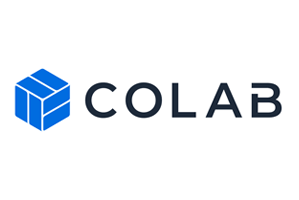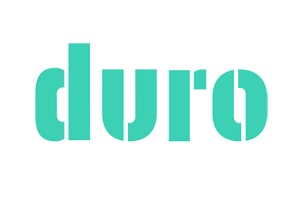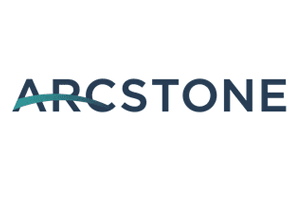We spent some time with CoLab to get an update on their solution and their progress. We’ve been following CoLab and their goal to become the “system of engagement” for engineering. I’ve referred to them as the potential second half of the PLM promise because they go beyond data and process management to provide a…
- Improve Manufacturing Engineering to Increase Profitability
- Address Process Designer Challenges
- Recognize the Opportunity
- Quantify the Potential
- Identify Performance Drivers
- Find Issues Earlier in Design
- Use more 3D and Simulation
- Use More Advanced Ways to Support 3D / Simulation
- Leverage More Integrated Solutions
- Use More Advanced Communication and Collaboration
- Quantify the Improvement
- Recommendations and Next Steps
- About the Research
- Acknowledgments
Improve Manufacturing Engineering Performance
Improve Performance in the Face of Complexity How can manufacturers improve manufacturing engineering? We surveyed 177 people directly involved with manufacturing engineering and found that modernizing processes and technology drives higher manufacturing engineering productivity and performance. These improvements are crucial to profitability as customers demand high quality, more personalized products at increasingly faster time to market; all despite rising product and manufacturing complexity. Modernize Manufacturing Engineering Survey results show that Top Performers (see definition in full eBook) in manufacturing engineering have increased maturity in the way they plan, validate, and communicate manufacturing operations. These leading companies waste less time on non-value-added activities, find issues sooner, and spend less on physical prototypes. They accomplish this through best practices, including:- More advanced collaboration and communication methods
- Increased use of 3D and simulation to plan and validate manufacturing operations with virtual, digital twins
Recognize the Opportunity
Manufacturing Engineering is Ready for an Upgrade It’s time for change. Manufacturers must digitalize production planning to reduce cycle times, increase efficiently, and deliver quality. Companies need to adopt new techniques to validate manufacturing earlier in the process, in parallel with product design.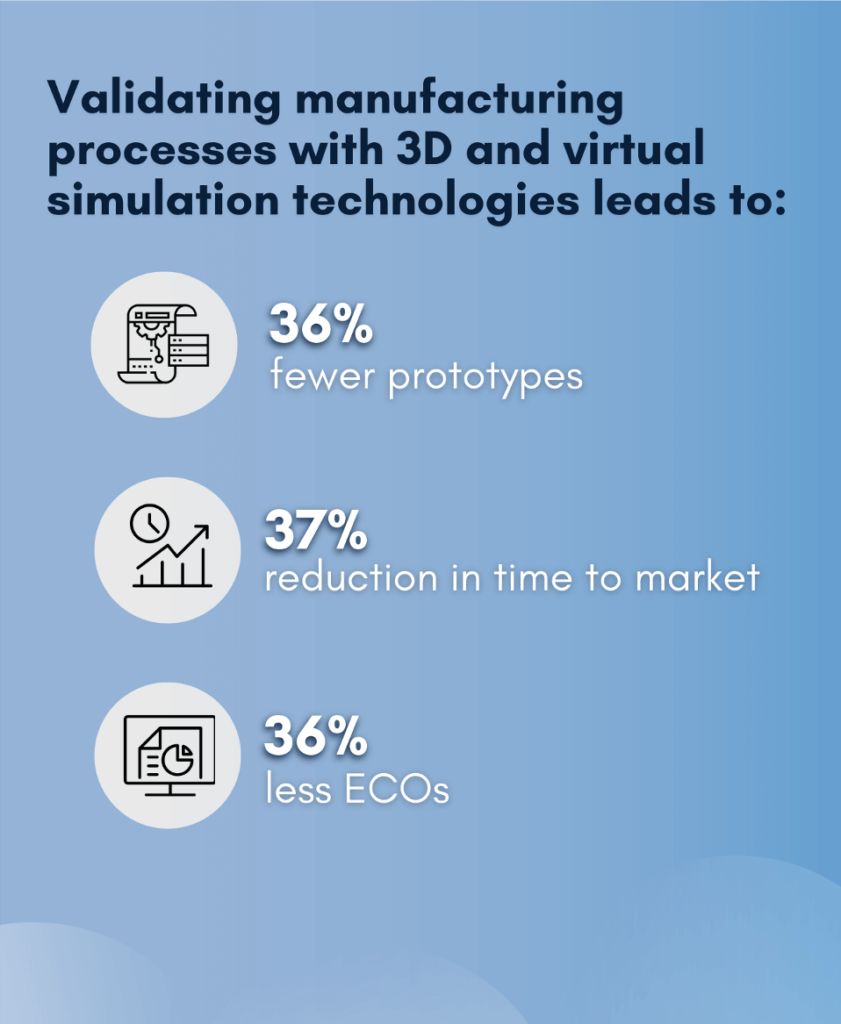 Current Processes can be Improved
There is significant room for improvement. The majority of companies validate process plans with time-consuming and expensive physical prototyping. Physical prototypes bring abstract designs into the real world so engineers can identify issues and improvement opportunities. Most companies also use spreadsheets, which are prone to errors and file-based so they are not conducive to collaboration. These approaches lead to late discoveries and expensive process validation.
Leverage Visual Approaches
Trading physical prototypes for digital validation reduces time and cost. A significant number of companies already use some form of virtual representations. Static visualizations can help engineers see an issue in the digital world before committing to a physical prototype or manufacturing equipment.
Adopt Simulation
Beyond static images, virtual simulation helps designers go beyond “seeing” to virtually experiencing the production process. While only about one-quarter use either 2D or 3D simulation, it’s a promising technology and a potential for significant planning and validation improvement.
Current Processes can be Improved
There is significant room for improvement. The majority of companies validate process plans with time-consuming and expensive physical prototyping. Physical prototypes bring abstract designs into the real world so engineers can identify issues and improvement opportunities. Most companies also use spreadsheets, which are prone to errors and file-based so they are not conducive to collaboration. These approaches lead to late discoveries and expensive process validation.
Leverage Visual Approaches
Trading physical prototypes for digital validation reduces time and cost. A significant number of companies already use some form of virtual representations. Static visualizations can help engineers see an issue in the digital world before committing to a physical prototype or manufacturing equipment.
Adopt Simulation
Beyond static images, virtual simulation helps designers go beyond “seeing” to virtually experiencing the production process. While only about one-quarter use either 2D or 3D simulation, it’s a promising technology and a potential for significant planning and validation improvement.
Recommendations and Next Steps
Make a Strategic Improvement Today’s product, manufacturing process, and market complexity demand new ways of working. The Top Performers are transforming manufacturing engineering through digitalization, better collaboration, 3D, and simulation allowing them to overcome efficiency, quality, and cost challenges. Using virtual, digital twins offers manufacturing engineers both the ability to improve their own performance and a strategic opportunity to increase overall product development profitability. These leaders spend 17% less time on non-value-added activities in manufacturing engineering, directly reducing development cycle times. Improve Time to Market Survey respondents report that they can reduce time to market by 37% by using 3D and simulation to plan and validate manufacturing operations. This is done, in part, by increasing efficiency, reducing time-consuming physical prototyping, and lowering rework by finding issues sooner in product development. Reduce Cost Survey respondents share that they can eliminate 36% of their prototypes by increasing maturity, leading to significant cost savings per product. They do this by shifting validation and issue identification sooner in the product development process so they need fewer physical prototypes. Increase Quality Responding companies also indicate that they can reduce ECOs by over one-third. They do this by improving manufacturing process design using virtual technologies. Top Performers are more likely to find physical manufacturing issues in a virtual model than Others who are more likely to discover them in physical prototypes and actual production. Get Started It’s time to improve manufacturing engineering productivity and performance. Companies can follow the lead of the Top Performers to increase maturity in how they plan, validate, and communicate manufacturing plans. To increase maturity, manufacturers should adopt the best practices of the Top Performers, including using integrated solutions such as 3D and simulation for manufacturing engineering.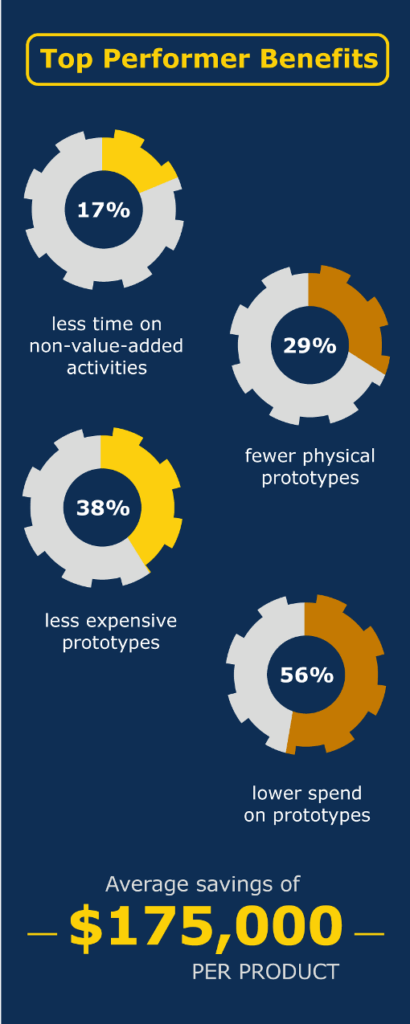 *This summary is an abbreviated version of the research and does not contain the full content. For the full research, please visit our sponsor Dassault Systèmes DELMIA (registration required).
If you have difficulty obtaining a copy of the report, please contact us.
*This summary is an abbreviated version of the research and does not contain the full content. For the full research, please visit our sponsor Dassault Systèmes DELMIA (registration required).
If you have difficulty obtaining a copy of the report, please contact us.
[post_title] => Transforming Manufacturing Engineering [post_excerpt] => [post_status] => publish [comment_status] => open [ping_status] => open [post_password] => [post_name] => transforming-manufacturing-engineering [to_ping] => [pinged] => [post_modified] => 2024-01-30 13:57:29 [post_modified_gmt] => 2024-01-30 18:57:29 [post_content_filtered] => [post_parent] => 0 [guid] => https://tech-clarity.com/?p=17806 [menu_order] => 0 [post_type] => post [post_mime_type] => [comment_count] => 0 [filter] => raw ) [3] => WP_Post Object ( [ID] => 17798 [post_author] => 2574 [post_date] => 2023-02-02 11:13:32 [post_date_gmt] => 2023-02-02 16:13:32 [post_content] => As a production metrics maven, I’m energized by a recent briefing for Jim Brown and me with Edge2Web, Inc. about their expansion to a second platform and first foray into applications. Now its low-code IoT tools Director and Flow Server run both on Siemens Digital Industries Software MindSphere and Amazon Web Services (AWS). This opens new horizons for customers that have selected the AWS IoT platform for both user-facing and back-end smart factory software development. Their new Factory Insights manufacturing intelligence and OEE application sits on Amazon Web Services’ IoT SiteWise. The OT data it ingests is in an open platform, accessible to many tools and ready for integration. Built on Edge2Web’s proven low-code tools for IoT, this dashboard and scorecard-oriented application has value out of the box. It is also highly configurable and extensible to match the process, terminology, and priorities of each plant. While it is early days, we suspect the manufacturers who select Factory Insights are likely to have an easier time scaling out from a proof of concept to full enterprise-wide use. I also love that a free sandbox version is available for people to get a feel for setting up performance monitoring in Factory Insights. Thank you, Fred Holahan, for taking the time to update us on this exciting development!
 [post_title] => Edge2Web Moves from Tools to Manufacturing Intelligence Application on AWS (Insight)
[post_excerpt] =>
[post_status] => publish
[comment_status] => open
[ping_status] => open
[post_password] =>
[post_name] => manufacturing-intelligence-insight
[to_ping] =>
[pinged] =>
[post_modified] => 2023-02-02 11:14:05
[post_modified_gmt] => 2023-02-02 16:14:05
[post_content_filtered] =>
[post_parent] => 0
[guid] => https://tech-clarity.com/?p=17798
[menu_order] => 0
[post_type] => post
[post_mime_type] =>
[comment_count] => 0
[filter] => raw
)
[4] => WP_Post Object
(
[ID] => 17787
[post_author] => 2
[post_date] => 2023-02-01 09:00:46
[post_date_gmt] => 2023-02-01 14:00:46
[post_content] =>
[post_title] => Edge2Web Moves from Tools to Manufacturing Intelligence Application on AWS (Insight)
[post_excerpt] =>
[post_status] => publish
[comment_status] => open
[ping_status] => open
[post_password] =>
[post_name] => manufacturing-intelligence-insight
[to_ping] =>
[pinged] =>
[post_modified] => 2023-02-02 11:14:05
[post_modified_gmt] => 2023-02-02 16:14:05
[post_content_filtered] =>
[post_parent] => 0
[guid] => https://tech-clarity.com/?p=17798
[menu_order] => 0
[post_type] => post
[post_mime_type] =>
[comment_count] => 0
[filter] => raw
)
[4] => WP_Post Object
(
[ID] => 17787
[post_author] => 2
[post_date] => 2023-02-01 09:00:46
[post_date_gmt] => 2023-02-01 14:00:46
[post_content] => 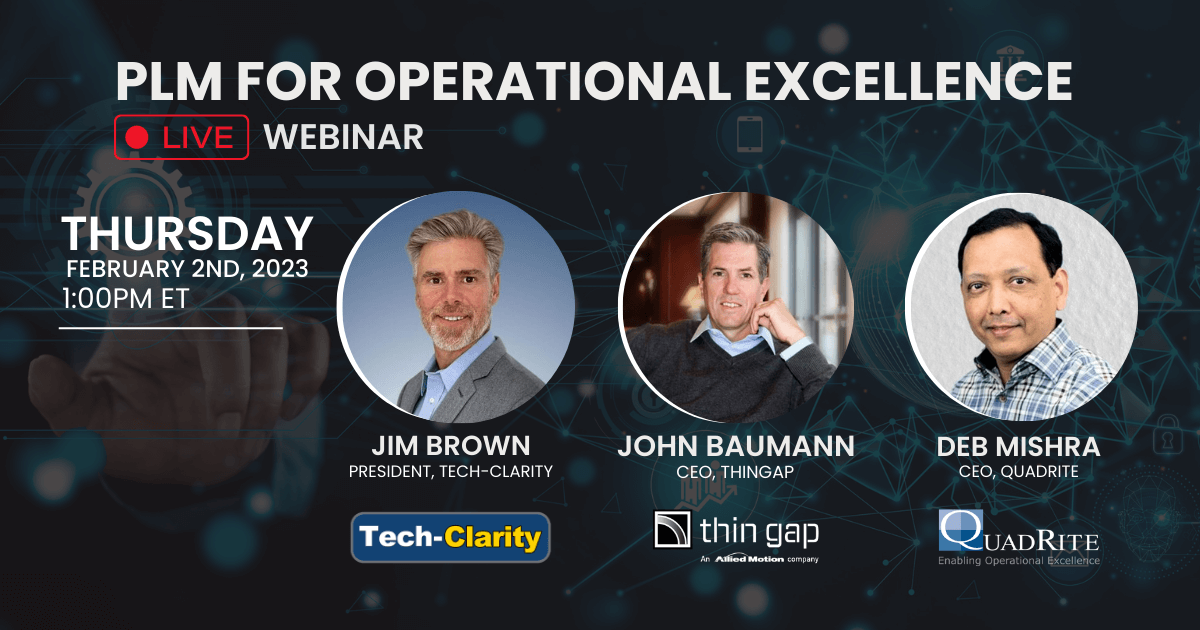 How can PLM, traditionally an engineering-centric solution, drive innovation, agility, and operational excellence throughout the entire product lifecycle? Attend this webinar to learn how the right PLM can help manufacturers focus on the big picture, not just engineering, to develop profitable products. Hear from:
How can PLM, traditionally an engineering-centric solution, drive innovation, agility, and operational excellence throughout the entire product lifecycle? Attend this webinar to learn how the right PLM can help manufacturers focus on the big picture, not just engineering, to develop profitable products. Hear from:
- Jim Brown, President of Tech-Clarity, reviewing findings from his recent research and leading the panel discussion.
- John Baumann, CEO of ThinGap, providing his experience in expanding the role of PLM for manufacturing of sophisticated and precise electric motors
- Deb Mishra, CEO of QuadRite, sharing his experience applying technology to drive operational excellence
 What do manufacturers need in MES to be competitive both today and in the future?
Hint: it goes well beyond strong functional support and into what may sound like buzzwords, but are truly crucial architectural elements. In this paper, we group them into three elements: digital thread-ready, personalized, and leveraging a comprehensive digital twin. Each of these supports various aspects of industrial competitiveness.
Please enjoy the summary* below. For the full research, please visit our sponsor Siemens Digital Industries Software (registration required).
What do manufacturers need in MES to be competitive both today and in the future?
Hint: it goes well beyond strong functional support and into what may sound like buzzwords, but are truly crucial architectural elements. In this paper, we group them into three elements: digital thread-ready, personalized, and leveraging a comprehensive digital twin. Each of these supports various aspects of industrial competitiveness.
Please enjoy the summary* below. For the full research, please visit our sponsor Siemens Digital Industries Software (registration required).
Table of Contents
- MES: Pivotal Solution
- Escalating Pressures and Expectations
- Eight Aspects of Industrial Competitiveness
- Three Architectural Characteristics of MES
- Comprehensive Digital Twin Driving Insights
- Digital Thread as a Foundation
- Personalized MES for Great User Experience
- How Characteristics Map for Competitiveness
- Identifying MES with the Three Characteristics
- Recommendations
- Acknowledgments
MES to Support Today's Operations
Overcoming the Operational Squeeze As the world has become less predictable, manufacturers have had to learn to change direction quickly to compete and thrive. Eight critical aspects of industrial competitiveness prevail today, including innovation, sustainability, and resilience. Ensuring operations can deliver these capabilities is no mean feat. Operations are complex and can’t be simplified, but the IT systems that support and run them can be much more approachable and quicker to implement and tailor to specific needs. Manufacturing Execution Systems (MES) are crucial to support industrial competitiveness, and three characteristics are foundational.Three Architectural Characteristics of MES
Beyond Functionality Historically, MES needed the right functionality to fit production’s needs. That is now necessary but not sufficient. To be an effective system for digital transformation, it also needs to have three crucial architectural characteristics. Digital thread to ensure information connectivity; the ability to personalize it both by functionality and user experience; and to leverage all facets of a digital twin to reliably reflect and improve performance. #1 Digital Thread-ready Top-performing companies tend to be more effective at data availability and continuity across steps and their company and ecosystem.2 To facilitate this, MES must be open and capable of data enrichment. MES must contextualize data in required formats across domains and disciplines. Two-way information flow must occur with enterprise applications, including product lifecycle management (PLM), supply chain management (SCM), enterprise resource planning (ERP), customer relationship management (CRM), etc., and Operations Technology (OT), such as automation, equipment, IoT, historians, and supervisory control and data acquisition (SCADA). #2 Personalized For MES, one size does not fit all. Functional details must serve the language and culture of the specific industry. Beyond that, composable architectures provide a way to address pain points quickly with new functionality. Ideally, the system also provides a low-code user interface for citizen developers to tailor screens and data flows to each role in each plant—perhaps even the individual! Low-code used with suitable MES can deliver workflows for plant employees to access the data they need from (and contribute seamlessly to) the digital thread. #3 Leverages a Comprehensive Digital Twin A digital twin is a virtual model that can both predict and stay in sync with tangible assets and activities as conditions change. In the best case, MES uses models not only of the process and its performance but also of the products it produces. This interaction of the product, process, and performance is what’s physically occurring in the plant. This combination enables manufacturing engineering to better craft the process for each product variant. It also supports ongoing continuous improvement (CI) across all teams. Recommendations and Next Steps
Recommendations and Next Steps
- Set your strategy and priorities for the company and each site considering the eight aspects of competitiveness: decide which matter most to you now? How can they support one another? What priorities and needs do you foresee in the future?
- Assess plant operations’ capabilities to support each aspect of competitiveness and create a “heat map” to prioritize IT needs in each facility by top priority, most significant gap, quickest likely improvement, or a combination.
- Consider the MOM space and the entire business information and process flow needs in scoping your MES project. Remember, MES is at the center, so it must interact well with people and other systems (i.e., PLM, logistics).
- Create a clear set of goals for your MES selection that will drive both obvious near-term benefits and longer-term abilities to remain competitive. Base this firmly on company strategy and priorities.
- Educate up and down the organization that MES is not just the functions and modules you need in the plant(s) or data conduit between engineering, IoT/OT and IT, but the structure to ensure all of the data from those becomes usable in-context information.
- Evaluate MES based on a full definition of the three characteristics: digital thread-ready, available to personalize fully, and leverages a comprehensive digital twin.
- Consider the software provider’s ability to support your company’s long-term needs and their experience in your industry segment(s). Seek a trustworthy partner who can add domain expertise over the long haul.
- When you conduct reference calls to peers in your segment who have used the latest versions of an MES offering, expect good results but focus on challenges, timeframes, and not just plant but overall business impact.
- Be prepared to have conflicting views of the best MES solution, but ensure that the overall business objectives and long-term digital transformation possibilities stay at the forefront of your selection approach.
- Case studies that focused on cost, sustainability, quality, and managing complex projects
- The ability for NETVIBES to offer analytics applications that leverage common, semantically aligned data from ENOVIA
- Transition to cyber systems management
- Sustainability and business driven Lifecycle Management
- Formulated product lifecycle management
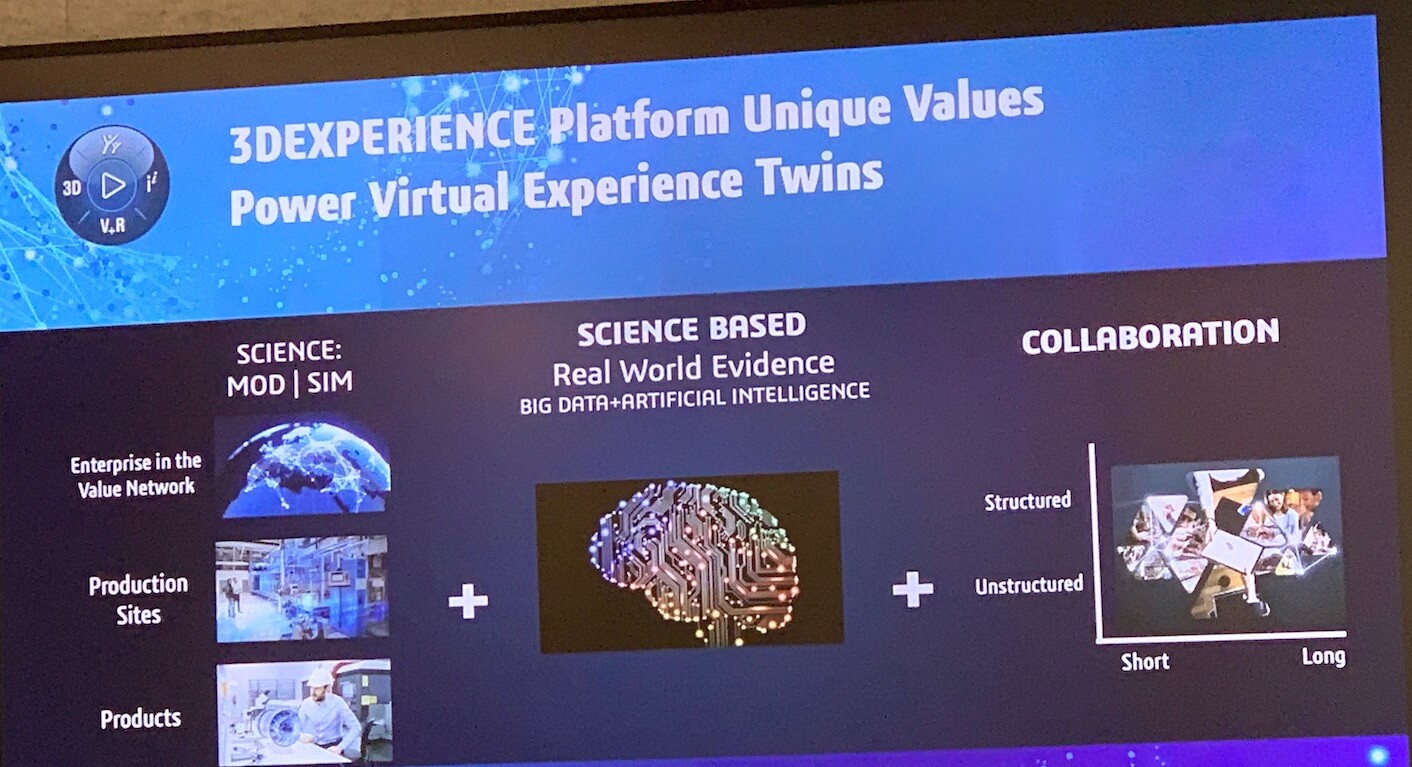 We’ve seen ENOVIA and NETVIBES present together at a number of events. It’s clear that it’s not just a matter of convenience or economies of scale to speak about two brands at a time. It’s a demonstration of the synergies that help DS make significant progress in evolving the 3DXEXPRIENCE Platform to become more of a business-oriented platform, where NETVIBES extends ENOVIA information and provides value well beyond engineering by bringing in additional data to provide an enterprise-level digital twin. There is still a lot of work to do, but this is the clearest evidence we’ve seen of an organic evolution from an engineering-centric PLM solution to meet broader business needs that appeal beyond Engineering to the executive suite.
Thanks to Joe Horine, Susan Lenzi, and Nancy O’Flaherty for your organizing the event and to Stephane Declee, Morgan Zimmerman, and a host of other leaders and subject matter experts for sharing your progress and vision.
[post_title] => ENOVIA and NETVIBES Show Transition to a Business Platform (Insight)
[post_excerpt] =>
[post_status] => publish
[comment_status] => open
[ping_status] => open
[post_password] =>
[post_name] => dassault-systemes-insight
[to_ping] =>
[pinged] =>
[post_modified] => 2022-12-21 01:10:08
[post_modified_gmt] => 2022-12-21 06:10:08
[post_content_filtered] =>
[post_parent] => 0
[guid] => https://tech-clarity.com/?p=17716
[menu_order] => 0
[post_type] => post
[post_mime_type] =>
[comment_count] => 0
[filter] => raw
)
[7] => WP_Post Object
(
[ID] => 17688
[post_author] => 2
[post_date] => 2022-12-14 09:00:20
[post_date_gmt] => 2022-12-14 14:00:20
[post_content] =>
We’ve seen ENOVIA and NETVIBES present together at a number of events. It’s clear that it’s not just a matter of convenience or economies of scale to speak about two brands at a time. It’s a demonstration of the synergies that help DS make significant progress in evolving the 3DXEXPRIENCE Platform to become more of a business-oriented platform, where NETVIBES extends ENOVIA information and provides value well beyond engineering by bringing in additional data to provide an enterprise-level digital twin. There is still a lot of work to do, but this is the clearest evidence we’ve seen of an organic evolution from an engineering-centric PLM solution to meet broader business needs that appeal beyond Engineering to the executive suite.
Thanks to Joe Horine, Susan Lenzi, and Nancy O’Flaherty for your organizing the event and to Stephane Declee, Morgan Zimmerman, and a host of other leaders and subject matter experts for sharing your progress and vision.
[post_title] => ENOVIA and NETVIBES Show Transition to a Business Platform (Insight)
[post_excerpt] =>
[post_status] => publish
[comment_status] => open
[ping_status] => open
[post_password] =>
[post_name] => dassault-systemes-insight
[to_ping] =>
[pinged] =>
[post_modified] => 2022-12-21 01:10:08
[post_modified_gmt] => 2022-12-21 06:10:08
[post_content_filtered] =>
[post_parent] => 0
[guid] => https://tech-clarity.com/?p=17716
[menu_order] => 0
[post_type] => post
[post_mime_type] =>
[comment_count] => 0
[filter] => raw
)
[7] => WP_Post Object
(
[ID] => 17688
[post_author] => 2
[post_date] => 2022-12-14 09:00:20
[post_date_gmt] => 2022-12-14 14:00:20
[post_content] =>  Manufacturers continue to move product data and product-related processes to the cloud. What’s driving them? What value are they looking for, and what are they achieving? We surveyed 270 companies that design, engineer, or manufacture products to find out.
Please enjoy the summary* below. For the full research, please visit our sponsor Autodesk (registration required).
Manufacturers continue to move product data and product-related processes to the cloud. What’s driving them? What value are they looking for, and what are they achieving? We surveyed 270 companies that design, engineer, or manufacture products to find out.
Please enjoy the summary* below. For the full research, please visit our sponsor Autodesk (registration required).
Table of Contents
- Multi-faceted Cloud Benefits
- Achieving Significant Benefits
- How Does the Cloud Impact Performance
- Digitalize Data and Processes
- Expand Cloud Data and Processes
- Increase Product Data Management Maturity
- Integrate Cloud Data and Processes on a Platform
- Taking the Next Steps
- About the Research
- Acknowledgments
Extending the Value in the Cloud
Top Performers Leverage the Cloud for Product Data and Processes The survey shows companies are going beyond primary cloud benefits to improve system cost, deployment, and operations. Although these benefits are valuable, manufacturers need more. They are looking for ways to change how they work. Over three-quarters of respondents say that the cloud is important or critical to driving digital transformation. Top Performers, those that report better product design and development performance, are even more strategic about their cloud adoption. This eBook shares how Top Performers extend cloud use for product-related data and processes and offers recommendations for manufacturers to get the most out of their cloud strategy.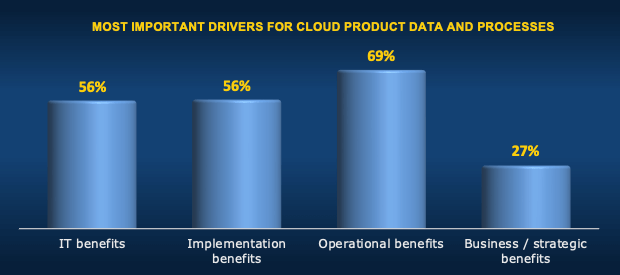 Achieving Significant Benefits
Achieving Significant Benefits
Companies are Gaining Value
Manufacturers are achieving multifaceted benefits. Respondents shared the operational and business benefits their company receives from having product-related data and processes in the cloud. These are in addition to IT and general advantages of the cloud span solution categories and are relatively well known.
Moving product data and processes offers some unique benefits, as well. For example, high-performance computing (HPC) is the most common benefit. HPC can allow companies the flexibility to perform resource-intensive processes without investing in high-end workstations or enable engineers to work from home. In addition, flexible, scalable compute power makes high-value tools easily accessible to infrequent users or new teams without the need to add additional resources like RAM or GPUs.
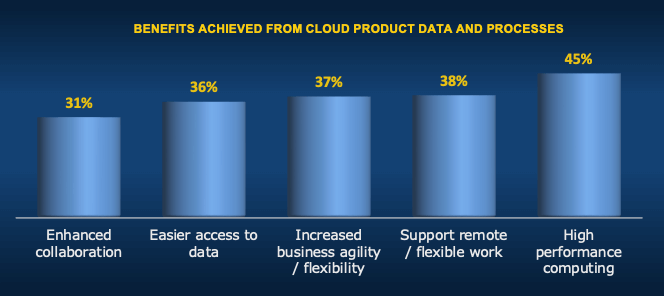 The Cloud Makes Work Easier and More Flexible
The next most common benefits are those that make work easier. Moving product-related data and processes to the cloud allows remote and flexible work, supports business agility, allows easier access to data, and enhances collaboration. These are very valuable for today’s distributed product design and development teams. They are also important as companies have adapted to changing markets and ways of working to cope with recent global disruptions like the pandemic. Additional benefits include enhanced talent acquisition and retention, greater supply chain connectivity, better data and knowledge retention, and continuous process improvement.
The Cloud Makes Work Easier and More Flexible
The next most common benefits are those that make work easier. Moving product-related data and processes to the cloud allows remote and flexible work, supports business agility, allows easier access to data, and enhances collaboration. These are very valuable for today’s distributed product design and development teams. They are also important as companies have adapted to changing markets and ways of working to cope with recent global disruptions like the pandemic. Additional benefits include enhanced talent acquisition and retention, greater supply chain connectivity, better data and knowledge retention, and continuous process improvement.
Taking the Next Steps
Take Advantage of Cloud Benefits Manufacturers target the cloud for digital transformation and achieve a broad array of benefits. The benefits of the cloud are proven and achievable. Take advantage of the cloud for product data and product related processes to achieve measurable benefits in the following areas:- Operational benefits
- IT / implementation benefits
- Business / strategic benefits
- Fully digitally transform product data and processes making it easier to share, reuse, and collaborate with others across the enterprise and the value chain
- Have more fully integrated data and processes in the cloud, providing a complete digital thread and a single version of the truth and coordinated actions that helps accelerate product development, encourage reuse, and drive higher quality
- Adopt more mature, best practice approaches to product data and processes in the cloud including
- Deploy more integrated cloud solutions or a platform to achieve greater product design and development performance
 [post_title] => Improve Service with Equipment Monitoring
[post_excerpt] =>
[post_status] => publish
[comment_status] => open
[ping_status] => open
[post_password] =>
[post_name] => remote-monitoring-infographic
[to_ping] =>
[pinged] =>
[post_modified] => 2023-12-15 15:30:52
[post_modified_gmt] => 2023-12-15 20:30:52
[post_content_filtered] =>
[post_parent] => 0
[guid] => https://tech-clarity.com/?p=17675
[menu_order] => 0
[post_type] => post
[post_mime_type] =>
[comment_count] => 0
[filter] => raw
)
[9] => WP_Post Object
(
[ID] => 17656
[post_author] => 2
[post_date] => 2022-12-12 10:00:50
[post_date_gmt] => 2022-12-12 15:00:50
[post_content] => I caught up with a really interesting software company that I’ve been following named Soley. I shared a bit about them after our first discussion last year and I was impressed with their unique solution. At that time, I saw how they used cloud, analytics, and collaborative decision-making to understand the impact products have on the value chain. They’ve formalized the approach, which they now call product mining, to help analyze product portfolios to gain efficiencies. They leverage complexity analytics, value patterns, and decision intelligence to create and analyze a graph model (aka enterprise digital twin) that allows their customers to gain transparency into portfolio complexity and inefficiencies so they can reduce ballast and side products. Thank you Maximilian Kissel and Sven Litke for the update.
[post_title] => Improve Service with Equipment Monitoring
[post_excerpt] =>
[post_status] => publish
[comment_status] => open
[ping_status] => open
[post_password] =>
[post_name] => remote-monitoring-infographic
[to_ping] =>
[pinged] =>
[post_modified] => 2023-12-15 15:30:52
[post_modified_gmt] => 2023-12-15 20:30:52
[post_content_filtered] =>
[post_parent] => 0
[guid] => https://tech-clarity.com/?p=17675
[menu_order] => 0
[post_type] => post
[post_mime_type] =>
[comment_count] => 0
[filter] => raw
)
[9] => WP_Post Object
(
[ID] => 17656
[post_author] => 2
[post_date] => 2022-12-12 10:00:50
[post_date_gmt] => 2022-12-12 15:00:50
[post_content] => I caught up with a really interesting software company that I’ve been following named Soley. I shared a bit about them after our first discussion last year and I was impressed with their unique solution. At that time, I saw how they used cloud, analytics, and collaborative decision-making to understand the impact products have on the value chain. They’ve formalized the approach, which they now call product mining, to help analyze product portfolios to gain efficiencies. They leverage complexity analytics, value patterns, and decision intelligence to create and analyze a graph model (aka enterprise digital twin) that allows their customers to gain transparency into portfolio complexity and inefficiencies so they can reduce ballast and side products. Thank you Maximilian Kissel and Sven Litke for the update.
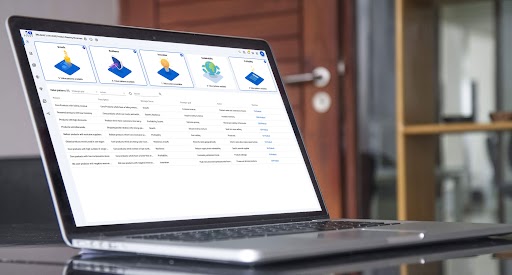 [post_title] => Update on Product Mining Company Soley (Insight)
[post_excerpt] =>
[post_status] => publish
[comment_status] => open
[ping_status] => open
[post_password] =>
[post_name] => product-mining-insight
[to_ping] =>
[pinged] =>
[post_modified] => 2022-12-12 12:19:10
[post_modified_gmt] => 2022-12-12 17:19:10
[post_content_filtered] =>
[post_parent] => 0
[guid] => https://tech-clarity.com/?p=17656
[menu_order] => 0
[post_type] => post
[post_mime_type] =>
[comment_count] => 0
[filter] => raw
)
[10] => WP_Post Object
(
[ID] => 17644
[post_author] => 2574
[post_date] => 2022-12-08 10:01:06
[post_date_gmt] => 2022-12-08 15:01:06
[post_content] => We are excited about prospects for continued service transformation for complex equipment after hearing the latest updates from ServiceMax. We know a new chapter will unfold as the PTC acquisition takes hold. Yet even before that, ServiceMax’s traction in field service management is impressive, with all of its primary product suites scoring new wins to arrive at nearly 400 customers and over 300,000 users. Product-centric from the start, this company differentiates itself by focusing on the service lifecycle for complex products. In their words, they “keep the world running.”
A pure-play SaaS provider on the SalesForce platform, we see how they approach new customers and focus on ongoing customer expansions. Voice of the customer activities seem to ensure that the product roadmap meets real needs, and they boast of a wide range of activities to ensure customers are increasingly satisfied with the support, product quality, and documentation.
[post_title] => Update on Product Mining Company Soley (Insight)
[post_excerpt] =>
[post_status] => publish
[comment_status] => open
[ping_status] => open
[post_password] =>
[post_name] => product-mining-insight
[to_ping] =>
[pinged] =>
[post_modified] => 2022-12-12 12:19:10
[post_modified_gmt] => 2022-12-12 17:19:10
[post_content_filtered] =>
[post_parent] => 0
[guid] => https://tech-clarity.com/?p=17656
[menu_order] => 0
[post_type] => post
[post_mime_type] =>
[comment_count] => 0
[filter] => raw
)
[10] => WP_Post Object
(
[ID] => 17644
[post_author] => 2574
[post_date] => 2022-12-08 10:01:06
[post_date_gmt] => 2022-12-08 15:01:06
[post_content] => We are excited about prospects for continued service transformation for complex equipment after hearing the latest updates from ServiceMax. We know a new chapter will unfold as the PTC acquisition takes hold. Yet even before that, ServiceMax’s traction in field service management is impressive, with all of its primary product suites scoring new wins to arrive at nearly 400 customers and over 300,000 users. Product-centric from the start, this company differentiates itself by focusing on the service lifecycle for complex products. In their words, they “keep the world running.”
A pure-play SaaS provider on the SalesForce platform, we see how they approach new customers and focus on ongoing customer expansions. Voice of the customer activities seem to ensure that the product roadmap meets real needs, and they boast of a wide range of activities to ensure customers are increasingly satisfied with the support, product quality, and documentation.
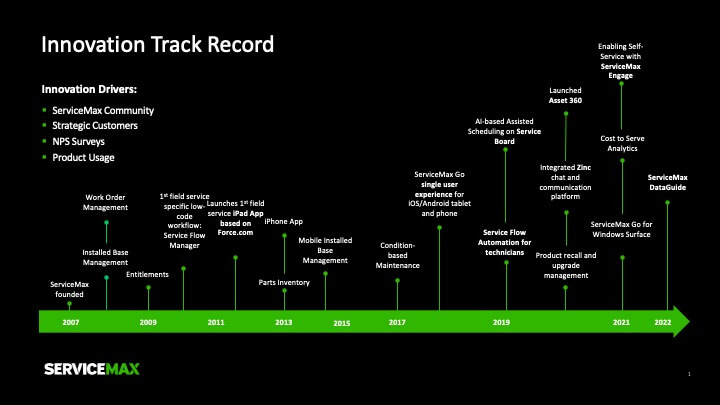 ServiceMax’s acquisition of Zinc in 2020 has become a central capability for enterprise-grade instant messaging. Their acquisition of LiquidFrameworks has paid off in additional sales of their FieldFX product for oil and gas, and as the underlying technology for their directed field service management solution, DataGuide, which shows promise to combat the shrinking workforce and knowledgebase of experienced technicians. They have also invested in mobile apps, with separate mobile apps for technicians to get guidance, collaborate, and for the end customers to be in touch with their service providers.
We now understand more of the momentum behind PTC’s announcement that it will acquire ServiceMax. Both are product-focused, and ServiceMax stretches into the in-use product lifecycle. ServiceMax’s momentum, whether on its own or as a SalesForce FSM add-on, delivers strength for PTC to build its business.
Thank you, Gordon Benzie, for taking the time to update us! We look forward to watching the progress of the combined PTC/ServiceMax business and conversations with Sumair Dutta and others.
[post_title] => ServiceMax Pre-PTC Highlights (Insight)
[post_excerpt] =>
[post_status] => publish
[comment_status] => open
[ping_status] => open
[post_password] =>
[post_name] => field-service-transformation
[to_ping] =>
[pinged] =>
[post_modified] => 2022-12-08 14:10:10
[post_modified_gmt] => 2022-12-08 19:10:10
[post_content_filtered] =>
[post_parent] => 0
[guid] => https://tech-clarity.com/?p=17644
[menu_order] => 0
[post_type] => post
[post_mime_type] =>
[comment_count] => 0
[filter] => raw
)
[11] => WP_Post Object
(
[ID] => 17611
[post_author] => 2
[post_date] => 2022-12-01 11:04:03
[post_date_gmt] => 2022-12-01 16:04:03
[post_content] => I had the opportunity to meet with the Duro team to get an update on their progress. We’re paying attention to Duro because they’re applying agile paradigms created for software development and making them applicable to companies that develop hardware. This is a novel approach that’s proving promising for software-intensive products like those in space, industrial electronics, and consumer device industries. They’re taking a unique approach, adapting PLM principles to agile product development with Github style workflows.
Duro has made significant progress since we last spoke. In particular, they’ve improved customer onboarding, enhanced and extended integrations, provided more configurability, and made their APIs more capable to provide their customers with more process flexibility. At the same time, they’ve grown their team and their customer base.
Duro is definitely an up-and-coming PLM vendor to watch. Thank you Michael Corr, Andrew Pisula, James D White, and Aphrodite Brinsmead for your time.
ServiceMax’s acquisition of Zinc in 2020 has become a central capability for enterprise-grade instant messaging. Their acquisition of LiquidFrameworks has paid off in additional sales of their FieldFX product for oil and gas, and as the underlying technology for their directed field service management solution, DataGuide, which shows promise to combat the shrinking workforce and knowledgebase of experienced technicians. They have also invested in mobile apps, with separate mobile apps for technicians to get guidance, collaborate, and for the end customers to be in touch with their service providers.
We now understand more of the momentum behind PTC’s announcement that it will acquire ServiceMax. Both are product-focused, and ServiceMax stretches into the in-use product lifecycle. ServiceMax’s momentum, whether on its own or as a SalesForce FSM add-on, delivers strength for PTC to build its business.
Thank you, Gordon Benzie, for taking the time to update us! We look forward to watching the progress of the combined PTC/ServiceMax business and conversations with Sumair Dutta and others.
[post_title] => ServiceMax Pre-PTC Highlights (Insight)
[post_excerpt] =>
[post_status] => publish
[comment_status] => open
[ping_status] => open
[post_password] =>
[post_name] => field-service-transformation
[to_ping] =>
[pinged] =>
[post_modified] => 2022-12-08 14:10:10
[post_modified_gmt] => 2022-12-08 19:10:10
[post_content_filtered] =>
[post_parent] => 0
[guid] => https://tech-clarity.com/?p=17644
[menu_order] => 0
[post_type] => post
[post_mime_type] =>
[comment_count] => 0
[filter] => raw
)
[11] => WP_Post Object
(
[ID] => 17611
[post_author] => 2
[post_date] => 2022-12-01 11:04:03
[post_date_gmt] => 2022-12-01 16:04:03
[post_content] => I had the opportunity to meet with the Duro team to get an update on their progress. We’re paying attention to Duro because they’re applying agile paradigms created for software development and making them applicable to companies that develop hardware. This is a novel approach that’s proving promising for software-intensive products like those in space, industrial electronics, and consumer device industries. They’re taking a unique approach, adapting PLM principles to agile product development with Github style workflows.
Duro has made significant progress since we last spoke. In particular, they’ve improved customer onboarding, enhanced and extended integrations, provided more configurability, and made their APIs more capable to provide their customers with more process flexibility. At the same time, they’ve grown their team and their customer base.
Duro is definitely an up-and-coming PLM vendor to watch. Thank you Michael Corr, Andrew Pisula, James D White, and Aphrodite Brinsmead for your time.
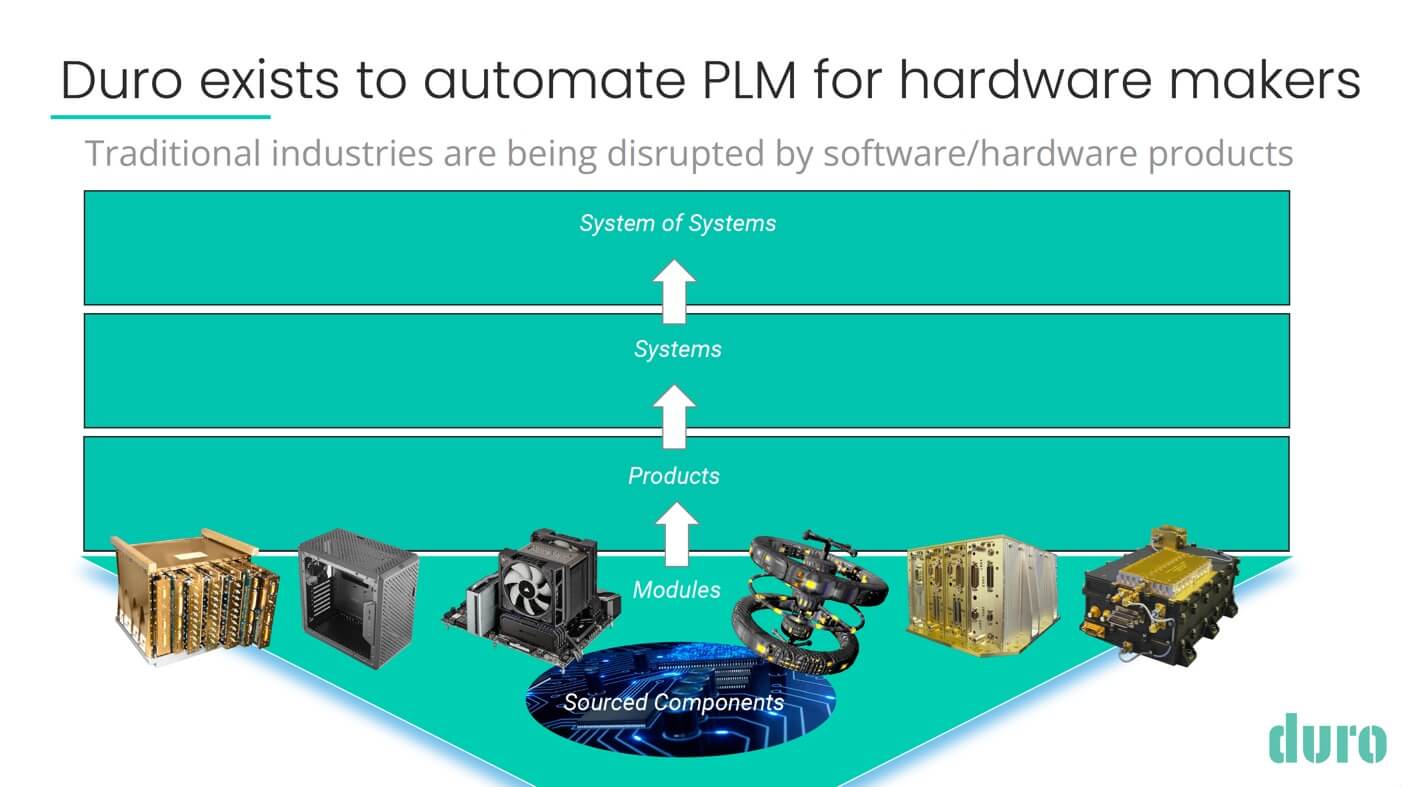 [post_title] => Duro Makes Progress in Agile PLM for Hardware (Insight)
[post_excerpt] =>
[post_status] => publish
[comment_status] => open
[ping_status] => open
[post_password] =>
[post_name] => duro-briefing
[to_ping] =>
[pinged] =>
[post_modified] => 2022-12-02 14:57:43
[post_modified_gmt] => 2022-12-02 19:57:43
[post_content_filtered] =>
[post_parent] => 0
[guid] => https://tech-clarity.com/?p=17611
[menu_order] => 0
[post_type] => post
[post_mime_type] =>
[comment_count] => 0
[filter] => raw
)
[12] => WP_Post Object
(
[ID] => 17591
[post_author] => 2574
[post_date] => 2022-11-29 16:12:29
[post_date_gmt] => 2022-11-29 21:12:29
[post_content] => I am giddy with optimism after a briefing with Arcstone. Finally, end-to-end supply chain visibility for compliance and sustainability assurance appears possible. This Singapore-based company recognized that a crucial missing piece for supply chain operations is accurate information from the plant floors of everyone in that ecosystem. They also address a way to share that information without undue overhead and hassle. Arcstone has products that span from the smallest supplier’s plant floor to the entire ecosystem.
[post_title] => Duro Makes Progress in Agile PLM for Hardware (Insight)
[post_excerpt] =>
[post_status] => publish
[comment_status] => open
[ping_status] => open
[post_password] =>
[post_name] => duro-briefing
[to_ping] =>
[pinged] =>
[post_modified] => 2022-12-02 14:57:43
[post_modified_gmt] => 2022-12-02 19:57:43
[post_content_filtered] =>
[post_parent] => 0
[guid] => https://tech-clarity.com/?p=17611
[menu_order] => 0
[post_type] => post
[post_mime_type] =>
[comment_count] => 0
[filter] => raw
)
[12] => WP_Post Object
(
[ID] => 17591
[post_author] => 2574
[post_date] => 2022-11-29 16:12:29
[post_date_gmt] => 2022-11-29 21:12:29
[post_content] => I am giddy with optimism after a briefing with Arcstone. Finally, end-to-end supply chain visibility for compliance and sustainability assurance appears possible. This Singapore-based company recognized that a crucial missing piece for supply chain operations is accurate information from the plant floors of everyone in that ecosystem. They also address a way to share that information without undue overhead and hassle. Arcstone has products that span from the smallest supplier’s plant floor to the entire ecosystem.
- arc.lite is a free MES for companies that might not otherwise have an IT system for production that digitizes paper-based operations.
- arc.ops is a low-code modular MES with 20 modules and powerful integration capabilities.
- arc.net is a multi-tier supply chain partner collaboration and real-time visibility tool that can deliver secure traceability through blockchain. T
- arc.green leverages all of that supply chain-wide data to create a carbon footprint rating.
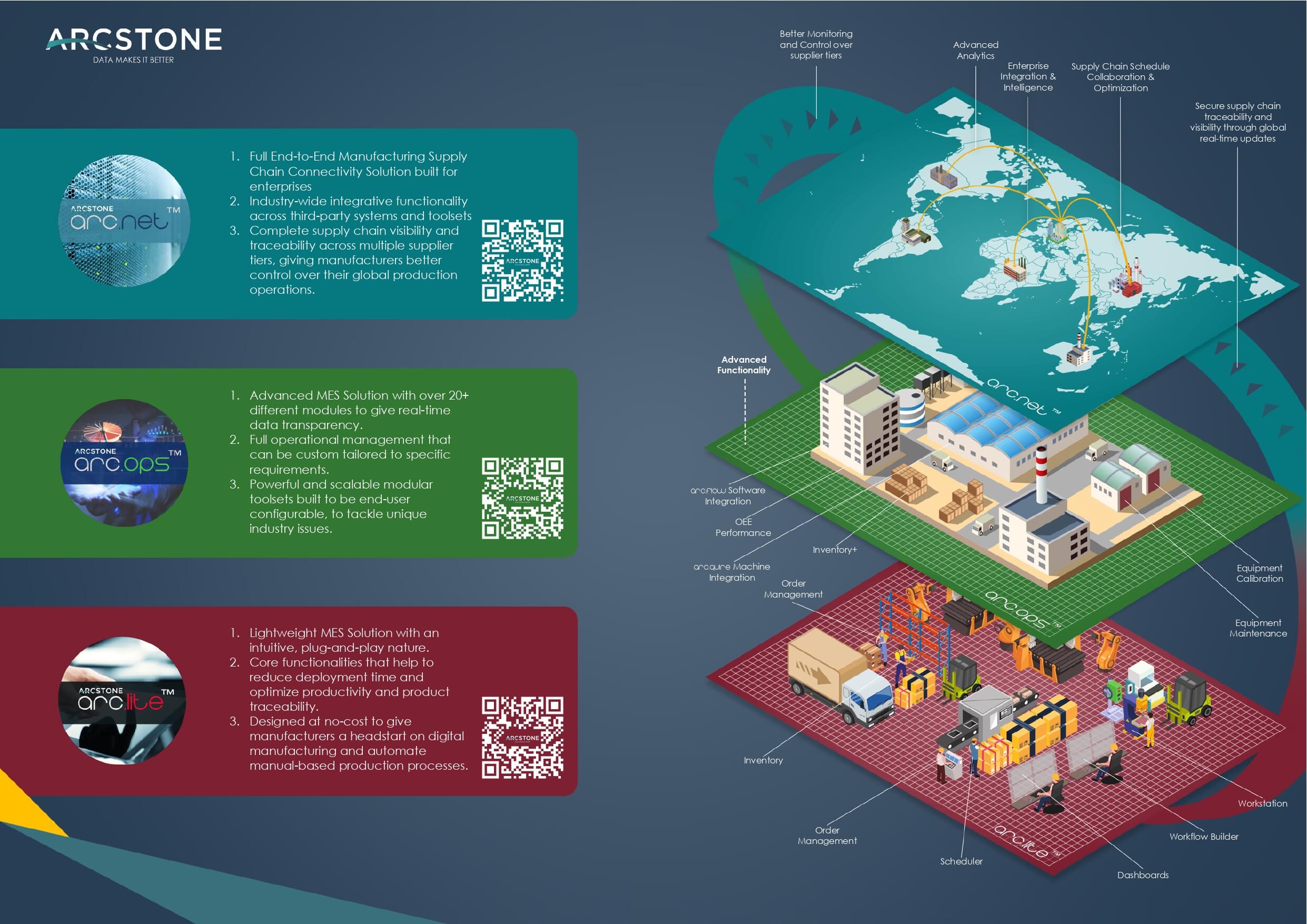 [post_title] => Arcstone: MES to Feed Supply Chain Compliance and Sustainability
[post_excerpt] =>
[post_status] => publish
[comment_status] => open
[ping_status] => open
[post_password] =>
[post_name] => mes-for-supply-chain-visibility
[to_ping] =>
[pinged] =>
[post_modified] => 2022-12-02 14:58:06
[post_modified_gmt] => 2022-12-02 19:58:06
[post_content_filtered] =>
[post_parent] => 0
[guid] => https://tech-clarity.com/?p=17591
[menu_order] => 0
[post_type] => post
[post_mime_type] =>
[comment_count] => 0
[filter] => raw
)
[13] => WP_Post Object
(
[ID] => 17575
[post_author] => 2
[post_date] => 2022-11-21 08:30:54
[post_date_gmt] => 2022-11-21 13:30:54
[post_content] =>
[post_title] => Arcstone: MES to Feed Supply Chain Compliance and Sustainability
[post_excerpt] =>
[post_status] => publish
[comment_status] => open
[ping_status] => open
[post_password] =>
[post_name] => mes-for-supply-chain-visibility
[to_ping] =>
[pinged] =>
[post_modified] => 2022-12-02 14:58:06
[post_modified_gmt] => 2022-12-02 19:58:06
[post_content_filtered] =>
[post_parent] => 0
[guid] => https://tech-clarity.com/?p=17591
[menu_order] => 0
[post_type] => post
[post_mime_type] =>
[comment_count] => 0
[filter] => raw
)
[13] => WP_Post Object
(
[ID] => 17575
[post_author] => 2
[post_date] => 2022-11-21 08:30:54
[post_date_gmt] => 2022-11-21 13:30:54
[post_content] =>  Business risk continues to grow and disrupt businesses, markets, and supply chains. Companies struggle to just bounce back from each disruption. But how can they do more, using digital transformation and analytics to bounce forward to take advantage of the opportunities that disruption presents?
In this webinar, Jim Brown will share how companies have accelerated new technology adoption and increased corporate agility, helping them better face the never-ending list of disruptions that now includes energy shortages and inflation in addition to unpredictable supply chains and workforce shortages.
We will also hear from our sponsor, Dassault Systemes Netvibes about how successful companies gain the full benefits of digital twins by combining the science-based representation of products, factories, and companies through modeling and simulation with the intelligence brought by data science.
Register for the live webinar to learn more on December 13 at 11:00 AM EST.
[post_title] => Bouncing Forward with Digital Transformation and Analytics
[post_excerpt] =>
[post_status] => publish
[comment_status] => open
[ping_status] => open
[post_password] =>
[post_name] => digital-transformation-analytics-webinar
[to_ping] =>
[pinged] =>
[post_modified] => 2023-12-15 15:38:33
[post_modified_gmt] => 2023-12-15 20:38:33
[post_content_filtered] =>
[post_parent] => 0
[guid] => https://tech-clarity.com/?p=17575
[menu_order] => 0
[post_type] => post
[post_mime_type] =>
[comment_count] => 0
[filter] => raw
)
[14] => WP_Post Object
(
[ID] => 12007
[post_author] => 2
[post_date] => 2022-11-16 09:30:10
[post_date_gmt] => 2022-11-16 14:30:10
[post_content] =>
Business risk continues to grow and disrupt businesses, markets, and supply chains. Companies struggle to just bounce back from each disruption. But how can they do more, using digital transformation and analytics to bounce forward to take advantage of the opportunities that disruption presents?
In this webinar, Jim Brown will share how companies have accelerated new technology adoption and increased corporate agility, helping them better face the never-ending list of disruptions that now includes energy shortages and inflation in addition to unpredictable supply chains and workforce shortages.
We will also hear from our sponsor, Dassault Systemes Netvibes about how successful companies gain the full benefits of digital twins by combining the science-based representation of products, factories, and companies through modeling and simulation with the intelligence brought by data science.
Register for the live webinar to learn more on December 13 at 11:00 AM EST.
[post_title] => Bouncing Forward with Digital Transformation and Analytics
[post_excerpt] =>
[post_status] => publish
[comment_status] => open
[ping_status] => open
[post_password] =>
[post_name] => digital-transformation-analytics-webinar
[to_ping] =>
[pinged] =>
[post_modified] => 2023-12-15 15:38:33
[post_modified_gmt] => 2023-12-15 20:38:33
[post_content_filtered] =>
[post_parent] => 0
[guid] => https://tech-clarity.com/?p=17575
[menu_order] => 0
[post_type] => post
[post_mime_type] =>
[comment_count] => 0
[filter] => raw
)
[14] => WP_Post Object
(
[ID] => 12007
[post_author] => 2
[post_date] => 2022-11-16 09:30:10
[post_date_gmt] => 2022-11-16 14:30:10
[post_content] =>  Jim Brown will host a panel discussion focusing on what it takes to deliver on the promise of the digital twin. The webinar will focus on what’s currently achievable and what results companies can reasonably expect from today’s commercially available solutions. We’ll compare the pros and cons of buying, building, and assembling digital twins and explore how far a company can go with a platform versus a “best-of-breed” approach.
Hear from a fantastic panel of experts:
Jim Brown will host a panel discussion focusing on what it takes to deliver on the promise of the digital twin. The webinar will focus on what’s currently achievable and what results companies can reasonably expect from today’s commercially available solutions. We’ll compare the pros and cons of buying, building, and assembling digital twins and explore how far a company can go with a platform versus a “best-of-breed” approach.
Hear from a fantastic panel of experts:
- Sameer Kher, Senior Director, R&D - Digital Twins, Ansys
- Robert Bray, VP & General Manager, Autodesk Tandem, Autodesk, Inc.
- Neil Garnett, Ericsson Service Transformation, Ericsson
- Jonathan Girroir, Director of Marketing, Tech Soft 3D
- Igor Tsinman, Co-Founder and President, AMC Bridge
- Game Engines and Digital Twins - Let's Play
- The Role of Simulation Technology in Digital Twins
- Digital Twin - Bridging the Gap Between Vision and Reality
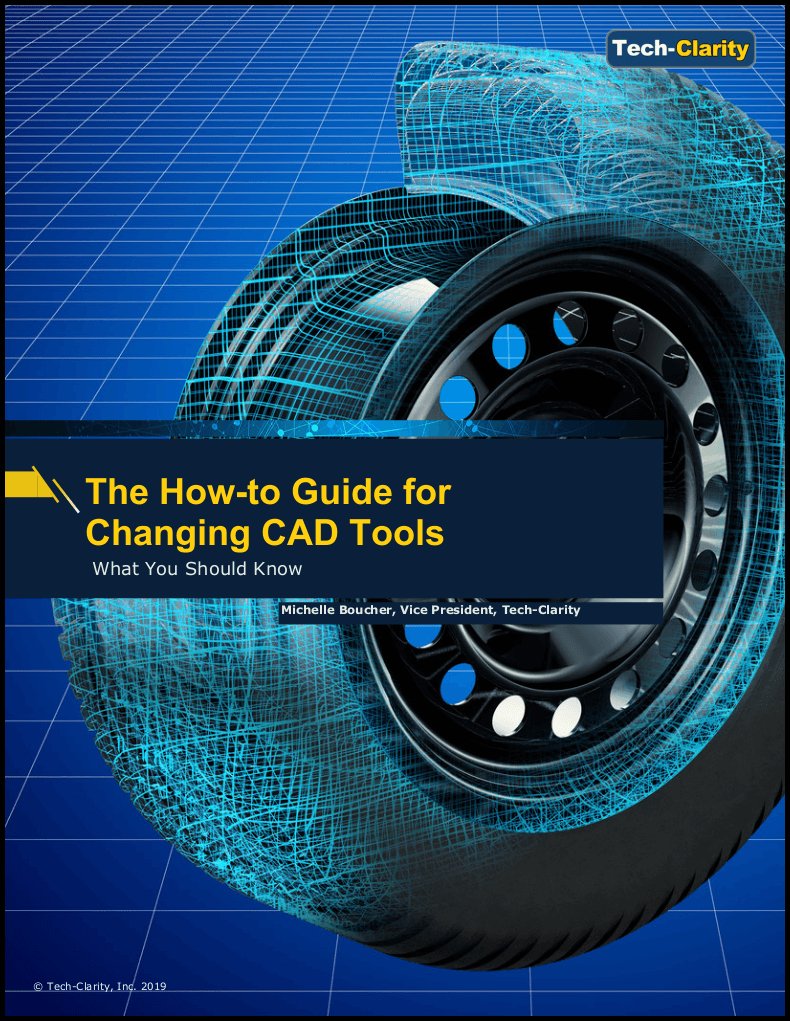 To keep pace with your competition, is it time to upgrade your CAD tool?
Tech-Clarity’s How-to Guide for Changing CAD Tools takes a look at this question and investigates what’s involved. Standing out in today’s global economy is not an easy task, so there is the constant quest for innovation. To innovate, many companies are turning to new technologies like 3D printing, new materials, smarter products, and digitalization. Tech-Clarity’s research How to Futureproof Your Product Design finds that 83% of Top Performing companies rate new technology as very important to their innovation goals. At the same time, new technologies can mean new approaches to design. Is your current CAD solution up to the challenge of new design approaches? If not, your CAD tool may be holding you back from bringing higher-performing, higher-quality, and more innovative products to market, making the struggle to keep up with the competition even harder.
Please enjoy the summary* below. For the full research, please visit our sponsor Dassault Systemes - SOLIDWORKS.
To keep pace with your competition, is it time to upgrade your CAD tool?
Tech-Clarity’s How-to Guide for Changing CAD Tools takes a look at this question and investigates what’s involved. Standing out in today’s global economy is not an easy task, so there is the constant quest for innovation. To innovate, many companies are turning to new technologies like 3D printing, new materials, smarter products, and digitalization. Tech-Clarity’s research How to Futureproof Your Product Design finds that 83% of Top Performing companies rate new technology as very important to their innovation goals. At the same time, new technologies can mean new approaches to design. Is your current CAD solution up to the challenge of new design approaches? If not, your CAD tool may be holding you back from bringing higher-performing, higher-quality, and more innovative products to market, making the struggle to keep up with the competition even harder.
Please enjoy the summary* below. For the full research, please visit our sponsor Dassault Systemes - SOLIDWORKS.
Table of Contents
- Table of Contents
- Executive Overview
- Understand Business Needs for Design
- What Drives a Change in CAD?
- Set Expectations for the Change
- Identifying Top Performers
- Identify the Right CAD Solution
- Extend CAD
- Conclusion
- Recommendations
- About the Author
- About the Research
- Acknowledgments
Executive Overview
Do you need to upgrade your design capabilities to keep up with competitors? Competing in today’s global economy is not easy. With significant global competition plus pressure from new entrants and innovative startups, it is tough to stand out. Many companies are turning to new technologies such as 3D printing, new materials, smarter products, digitalization, and more to innovate. Tech-Clarity’s research, How to Futureproof Your Product Design, finds that 83% of Top Performing companies rate new technology as very or extremely important to their innovation goals. However, many of these technologies require new approaches to design. Will your CAD tool support these new approaches? With the right design tools, companies are better positioned to quickly bring high-performing, high-quality, innovative products to market. If you are struggling to keep up with competitors, your CAD tool may be holding you back. So what should you do if you find your CAD tool is holding you back? Should you consider a change? If so, what should you expect? Is it worth the time to convert archived data into a new format? Most importantly, do the benefits outweigh potential risks? Tech-Clarity surveyed 192 companies to answer these questions. While there are many interesting findings, the most striking is that over time, business reasons rather than problems with CAD tools have become more influential when choosing a new CAD tool. Growing influencers include supply chains, the vendor’s vision for design, and the CAD vendors’ full breadth of offerings. This indicates CAD is now viewed as a strategic piece of a larger product development solution.
The biggest challenges of switching CAD tools are overcoming the learning curve and reusing legacy data. However, you do not need to convert all legacy data. In fact, on average, companies only convert about half of it, 52%. Despite the efforts involved, companies who have made a CAD change tend to be very happy. Eighty-three percent (83%) of respondents rate their satisfaction a four or five on a scale of one to five.
The study also identified what successful companies look for in a new CAD tool. Top Performers are more likely to consider ease of use, Technical Support, software quality, and market share, which includes the size of the user community. Since implementing their current CAD tools, Top Performers have reduced development time by 19%, development costs by15%, and the time to implement ECOs (engineering change orders) by 16%. They have also been able to increase the number of design iterations by 17%, helping them achieve greater levels of innovation.
So what should you do if you find your CAD tool is holding you back? Should you consider a change? If so, what should you expect? Is it worth the time to convert archived data into a new format? Most importantly, do the benefits outweigh potential risks? Tech-Clarity surveyed 192 companies to answer these questions. While there are many interesting findings, the most striking is that over time, business reasons rather than problems with CAD tools have become more influential when choosing a new CAD tool. Growing influencers include supply chains, the vendor’s vision for design, and the CAD vendors’ full breadth of offerings. This indicates CAD is now viewed as a strategic piece of a larger product development solution.
The biggest challenges of switching CAD tools are overcoming the learning curve and reusing legacy data. However, you do not need to convert all legacy data. In fact, on average, companies only convert about half of it, 52%. Despite the efforts involved, companies who have made a CAD change tend to be very happy. Eighty-three percent (83%) of respondents rate their satisfaction a four or five on a scale of one to five.
The study also identified what successful companies look for in a new CAD tool. Top Performers are more likely to consider ease of use, Technical Support, software quality, and market share, which includes the size of the user community. Since implementing their current CAD tools, Top Performers have reduced development time by 19%, development costs by15%, and the time to implement ECOs (engineering change orders) by 16%. They have also been able to increase the number of design iterations by 17%, helping them achieve greater levels of innovation.
Conclusion
Empowering engineers can help companies as they struggle to compete in today’s global economy. Quickly developing high-quality, innovative products, more economically helps companies differentiate and stand out from competitors. CAD tools, in particular, can have a significant impact on a company’s ability to achieve this. CAD has evolved significantly, and those who find their existing tool no longer meets their needs or will not support plans for growth may want to consider switching CAD tools. In many cases, companies have found it has had a very positive impact on their business. Top Performing companies are more likely to consider ease of use and support resources when selecting a CAD tool. This contributes to their ability to realize even more value, in less time.Recommendations
Based on industry experience and research for this report, Tech-Clarity offers the following recommendations:- Understand the business goals of your design process and ensure your CAD tool will support them. If not, consider a change.
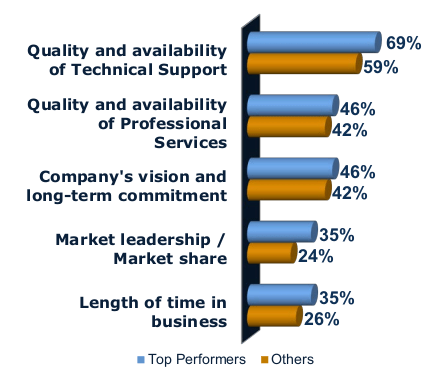
- Consider other factors beyond the features and functions of the CAD tool, but also the ability to collaborate with your supply chain, market share including available community, the vendor’s vision, the relationship with the vendor, and the needs for other supporting design tools.
- Consider extended applications as part of the CAD solution, such as embedded simulation, PDM, technical communications, and support for electrical components.
- Avoid overestimating requirements for training and loss of productivity by considering ease of use as well as available resources such as Technical Support, market share, and potential hiring pools.
- Convert only the legacy data you need. It’s likely, you will only need half of it.
 How can PLM, traditionally an engineering-centric solution, drive innovation, agility, and operational excellence throughout the entire product lifecycle? Attend this webinar to learn how the right PLM can help manufacturers focus on the big picture, not just engineering, to develop profitable products. Hear from:
How can PLM, traditionally an engineering-centric solution, drive innovation, agility, and operational excellence throughout the entire product lifecycle? Attend this webinar to learn how the right PLM can help manufacturers focus on the big picture, not just engineering, to develop profitable products. Hear from:
- Jim Brown, President of Tech-Clarity, reviewing findings from his recent research and leading the panel discussion.
- John Baumann, CEO of ThinGap, providing his experience in expanding the role of PLM for manufacturing of sophisticated and precise electric motors
- Deb Mishra, CEO of QuadRite, sharing his experience applying technology to drive operational excellence
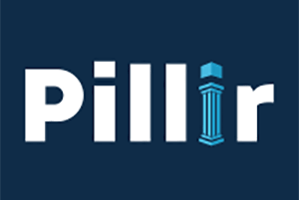 It’s really exciting to see low code / no code solutions hitting their stride. We’ve been following the approach for a long time and we’re seeing it take shape in some really interesting ways. Julie Fraser and I spoke with Pillir to understand how they’re applying low-code to improve manufacturing and supply chain in the SAP ecosystem. They’ve developed a cloud-based platform aimed at helping companies automate manual gaps with low-code, extending SAP, and modernizing legacy applications.
Companies are facing significant disruption and desperately need ways to increase agility and get more value from existing systems, what our research calls filling digital transformation gaps. Pillir helps by providing pre-built applications built on their platform and allowing customers to use them as is, modify them, or build their own applications tapping into underlying systems. One of the really interesting aspects of their approach is their focus on scanners and other rugged devices, in addition to supporting mobile, online, and offline use cases that are common in manufacturing plants and distribution facilities.
Thanks for sharing what you do, Vaidya Aiyer and Irit Gillath, we’re looking forward to learning more. And thank you for setting up the discussion Suzanne Mattaboni.
It’s really exciting to see low code / no code solutions hitting their stride. We’ve been following the approach for a long time and we’re seeing it take shape in some really interesting ways. Julie Fraser and I spoke with Pillir to understand how they’re applying low-code to improve manufacturing and supply chain in the SAP ecosystem. They’ve developed a cloud-based platform aimed at helping companies automate manual gaps with low-code, extending SAP, and modernizing legacy applications.
Companies are facing significant disruption and desperately need ways to increase agility and get more value from existing systems, what our research calls filling digital transformation gaps. Pillir helps by providing pre-built applications built on their platform and allowing customers to use them as is, modify them, or build their own applications tapping into underlying systems. One of the really interesting aspects of their approach is their focus on scanners and other rugged devices, in addition to supporting mobile, online, and offline use cases that are common in manufacturing plants and distribution facilities.
Thanks for sharing what you do, Vaidya Aiyer and Irit Gillath, we’re looking forward to learning more. And thank you for setting up the discussion Suzanne Mattaboni.
 [post_title] => Pillir Lowcode Solutions are Improving the SAP Ecosystem (Insight)
[post_excerpt] =>
[post_status] => publish
[comment_status] => open
[ping_status] => open
[post_password] =>
[post_name] => pillir-low-code-solutions-insight
[to_ping] =>
[pinged] =>
[post_modified] => 2023-01-30 11:53:51
[post_modified_gmt] => 2023-01-30 16:53:51
[post_content_filtered] =>
[post_parent] => 0
[guid] => https://tech-clarity.com/?p=17762
[menu_order] => 0
[post_type] => post
[post_mime_type] =>
[comment_count] => 0
[filter] => raw
)
[18] => WP_Post Object
(
[ID] => 11959
[post_author] => 2574
[post_date] => 2022-10-24 15:15:10
[post_date_gmt] => 2022-10-24 19:15:10
[post_content] =>
[post_title] => Pillir Lowcode Solutions are Improving the SAP Ecosystem (Insight)
[post_excerpt] =>
[post_status] => publish
[comment_status] => open
[ping_status] => open
[post_password] =>
[post_name] => pillir-low-code-solutions-insight
[to_ping] =>
[pinged] =>
[post_modified] => 2023-01-30 11:53:51
[post_modified_gmt] => 2023-01-30 16:53:51
[post_content_filtered] =>
[post_parent] => 0
[guid] => https://tech-clarity.com/?p=17762
[menu_order] => 0
[post_type] => post
[post_mime_type] =>
[comment_count] => 0
[filter] => raw
)
[18] => WP_Post Object
(
[ID] => 11959
[post_author] => 2574
[post_date] => 2022-10-24 15:15:10
[post_date_gmt] => 2022-10-24 19:15:10
[post_content] => 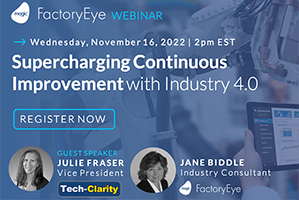 How can you supercharge continuous improvement (CI) to keep up with accelerating demands and stiff competition? As a manufacturer, this is a key question. Tech-Clarity research has some pointers to the answer, and FactoryEye’s got examples too. Join this webinar discussion Nov 16, 2022 at 2pm Eastern time to learn:
How can you supercharge continuous improvement (CI) to keep up with accelerating demands and stiff competition? As a manufacturer, this is a key question. Tech-Clarity research has some pointers to the answer, and FactoryEye’s got examples too. Join this webinar discussion Nov 16, 2022 at 2pm Eastern time to learn:
- A new set of expectations for today’s CI program
- Why you must go beyond PDCA for more powerful CI results
- What data management capabilities deliver superior results
- What aspects of plant data top performers have mastered that others have not
- Elements of a new style of software designed to supercharge CI
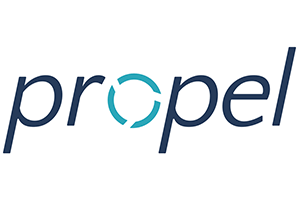 I had the chance to check in with Propel to get an update on their Product Value Management (PVM) strategy. I’m usually not a big fan of new acronyms, but they really are talking about something more than the current state of PLM. When I started researching PLM (two decades ago, yikes), I developed a comprehensive framework for what the solution could and should be. At the time, it was influenced quite a bit by consumer-oriented new product development (NPD) processes, where NPD needed to expand to NPDI (adding introduction). Few, if any, PLM vendors had that vision, and I would propose that none fully delivered on the promise. Propel is now realizing that vision. The key difference is filling what they call the “product value gap” between product and commercial teams. Propel’s strategy goes beyond what I envisioned, though, focusing on a comprehensive customer experience that spans products and product experiences. It includes three pillars: Defining the product, product operations, and market engagement. It fits the times and how consumers want to engage with products and companies. Propel is led by strategic, visionary thinkers, including Ray Hein, and has the strong support of Salesforce. Keep your eyes on them. If anyone can shake up the industry and move it beyond PLM to PVM it’s probably them. Thanks Tom Shoemaker for sharing the vision with me.
I had the chance to check in with Propel to get an update on their Product Value Management (PVM) strategy. I’m usually not a big fan of new acronyms, but they really are talking about something more than the current state of PLM. When I started researching PLM (two decades ago, yikes), I developed a comprehensive framework for what the solution could and should be. At the time, it was influenced quite a bit by consumer-oriented new product development (NPD) processes, where NPD needed to expand to NPDI (adding introduction). Few, if any, PLM vendors had that vision, and I would propose that none fully delivered on the promise. Propel is now realizing that vision. The key difference is filling what they call the “product value gap” between product and commercial teams. Propel’s strategy goes beyond what I envisioned, though, focusing on a comprehensive customer experience that spans products and product experiences. It includes three pillars: Defining the product, product operations, and market engagement. It fits the times and how consumers want to engage with products and companies. Propel is led by strategic, visionary thinkers, including Ray Hein, and has the strong support of Salesforce. Keep your eyes on them. If anyone can shake up the industry and move it beyond PLM to PVM it’s probably them. Thanks Tom Shoemaker for sharing the vision with me.
 [post_title] => Propel's Product Value Management (PVM) Strategy (Insight)
[post_excerpt] =>
[post_status] => publish
[comment_status] => open
[ping_status] => open
[post_password] =>
[post_name] => product-value-management-insight-propel
[to_ping] =>
[pinged] =>
[post_modified] => 2023-01-30 12:07:24
[post_modified_gmt] => 2023-01-30 17:07:24
[post_content_filtered] =>
[post_parent] => 0
[guid] => https://tech-clarity.com/?p=17772
[menu_order] => 0
[post_type] => post
[post_mime_type] =>
[comment_count] => 0
[filter] => raw
)
)
[post_count] => 20
[current_post] => -1
[before_loop] => 1
[in_the_loop] =>
[post] => WP_Post Object
(
[ID] => 17877
[post_author] => 2
[post_date] => 2023-02-14 11:40:30
[post_date_gmt] => 2023-02-14 16:40:30
[post_content] => We spent some time with CoLab to get an update on their solution and their progress. We’ve been following CoLab and their goal to become the “system of engagement” for engineering. I’ve referred to them as the potential second half of the PLM promise because they go beyond data and process management to provide a collaborative workspace that facilitates and captures problem solving and decision making, which usually happens outside of PLM (and enterprise systems in general) and goes unmanaged. Their view is pretty clear from the image on this post, they use it to describe the need for a design engagement system.
CoLab is not a replacement to PLM, it’s a complementary solution, and they’ve invested in easy integration to / from major PLM systems primarily including PTC Windchill and Siemens Teamcenter. Some of the primary examples of processes that customers have adopted CoLab to support are formal design reviews, supplier collaboration, and cost reduction / value engineering.
They’ve seen good traction with major manufacturers including Ford, Komatsu, and Polaris. Another positive sign of their progress is that existing customers are expanding their use of the tool, for example to new departments, placopnts, suppliers, and business units. Thank you Adam Keating and MJ Peters for the update!
[post_title] => Propel's Product Value Management (PVM) Strategy (Insight)
[post_excerpt] =>
[post_status] => publish
[comment_status] => open
[ping_status] => open
[post_password] =>
[post_name] => product-value-management-insight-propel
[to_ping] =>
[pinged] =>
[post_modified] => 2023-01-30 12:07:24
[post_modified_gmt] => 2023-01-30 17:07:24
[post_content_filtered] =>
[post_parent] => 0
[guid] => https://tech-clarity.com/?p=17772
[menu_order] => 0
[post_type] => post
[post_mime_type] =>
[comment_count] => 0
[filter] => raw
)
)
[post_count] => 20
[current_post] => -1
[before_loop] => 1
[in_the_loop] =>
[post] => WP_Post Object
(
[ID] => 17877
[post_author] => 2
[post_date] => 2023-02-14 11:40:30
[post_date_gmt] => 2023-02-14 16:40:30
[post_content] => We spent some time with CoLab to get an update on their solution and their progress. We’ve been following CoLab and their goal to become the “system of engagement” for engineering. I’ve referred to them as the potential second half of the PLM promise because they go beyond data and process management to provide a collaborative workspace that facilitates and captures problem solving and decision making, which usually happens outside of PLM (and enterprise systems in general) and goes unmanaged. Their view is pretty clear from the image on this post, they use it to describe the need for a design engagement system.
CoLab is not a replacement to PLM, it’s a complementary solution, and they’ve invested in easy integration to / from major PLM systems primarily including PTC Windchill and Siemens Teamcenter. Some of the primary examples of processes that customers have adopted CoLab to support are formal design reviews, supplier collaboration, and cost reduction / value engineering.
They’ve seen good traction with major manufacturers including Ford, Komatsu, and Polaris. Another positive sign of their progress is that existing customers are expanding their use of the tool, for example to new departments, placopnts, suppliers, and business units. Thank you Adam Keating and MJ Peters for the update!
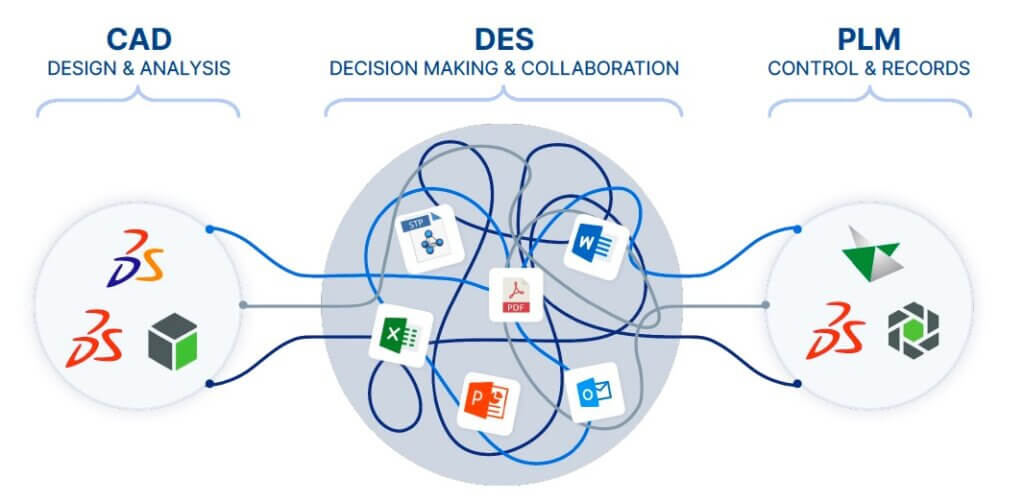 Image Source: CoLab
[post_title] => Update on CoLab as the Design Engagement System (Insight)
[post_excerpt] =>
[post_status] => publish
[comment_status] => open
[ping_status] => open
[post_password] =>
[post_name] => design-engagement-system-colab
[to_ping] =>
[pinged] =>
[post_modified] => 2023-02-14 11:55:47
[post_modified_gmt] => 2023-02-14 16:55:47
[post_content_filtered] =>
[post_parent] => 0
[guid] => https://tech-clarity.com/?p=17877
[menu_order] => 0
[post_type] => post
[post_mime_type] =>
[comment_count] => 0
[filter] => raw
)
[comment_count] => 0
[current_comment] => -1
[found_posts] => 802
[max_num_pages] => 41
[max_num_comment_pages] => 0
[is_single] =>
[is_preview] =>
[is_page] =>
[is_archive] =>
[is_date] =>
[is_year] =>
[is_month] =>
[is_day] =>
[is_time] =>
[is_author] =>
[is_category] =>
[is_tag] =>
[is_tax] =>
[is_search] =>
[is_feed] =>
[is_comment_feed] =>
[is_trackback] =>
[is_home] => 1
[is_privacy_policy] =>
[is_404] =>
[is_embed] =>
[is_paged] =>
[is_admin] =>
[is_attachment] =>
[is_singular] =>
[is_robots] =>
[is_favicon] =>
[is_posts_page] =>
[is_post_type_archive] =>
[query_vars_hash:WP_Query:private] => 502275aeccb471b0b4c2f17be52f5c80
[query_vars_changed:WP_Query:private] => 1
[thumbnails_cached] =>
[allow_query_attachment_by_filename:protected] =>
[stopwords:WP_Query:private] =>
[compat_fields:WP_Query:private] => Array
(
[0] => query_vars_hash
[1] => query_vars_changed
)
[compat_methods:WP_Query:private] => Array
(
[0] => init_query_flags
[1] => parse_tax_query
)
[query_cache_key:WP_Query:private] => wp_query:2919cac6005cc5d9efd895d50d2cca99:0.40302600 17637756430.41303200 1763775643
)
Image Source: CoLab
[post_title] => Update on CoLab as the Design Engagement System (Insight)
[post_excerpt] =>
[post_status] => publish
[comment_status] => open
[ping_status] => open
[post_password] =>
[post_name] => design-engagement-system-colab
[to_ping] =>
[pinged] =>
[post_modified] => 2023-02-14 11:55:47
[post_modified_gmt] => 2023-02-14 16:55:47
[post_content_filtered] =>
[post_parent] => 0
[guid] => https://tech-clarity.com/?p=17877
[menu_order] => 0
[post_type] => post
[post_mime_type] =>
[comment_count] => 0
[filter] => raw
)
[comment_count] => 0
[current_comment] => -1
[found_posts] => 802
[max_num_pages] => 41
[max_num_comment_pages] => 0
[is_single] =>
[is_preview] =>
[is_page] =>
[is_archive] =>
[is_date] =>
[is_year] =>
[is_month] =>
[is_day] =>
[is_time] =>
[is_author] =>
[is_category] =>
[is_tag] =>
[is_tax] =>
[is_search] =>
[is_feed] =>
[is_comment_feed] =>
[is_trackback] =>
[is_home] => 1
[is_privacy_policy] =>
[is_404] =>
[is_embed] =>
[is_paged] =>
[is_admin] =>
[is_attachment] =>
[is_singular] =>
[is_robots] =>
[is_favicon] =>
[is_posts_page] =>
[is_post_type_archive] =>
[query_vars_hash:WP_Query:private] => 502275aeccb471b0b4c2f17be52f5c80
[query_vars_changed:WP_Query:private] => 1
[thumbnails_cached] =>
[allow_query_attachment_by_filename:protected] =>
[stopwords:WP_Query:private] =>
[compat_fields:WP_Query:private] => Array
(
[0] => query_vars_hash
[1] => query_vars_changed
)
[compat_methods:WP_Query:private] => Array
(
[0] => init_query_flags
[1] => parse_tax_query
)
[query_cache_key:WP_Query:private] => wp_query:2919cac6005cc5d9efd895d50d2cca99:0.40302600 17637756430.41303200 1763775643
)
All Results for "All"
Siemens Shows Progress with Mendix Lowcode for Industrial Applications (insight)
We just learned a lot in an interesting update briefing on Mendix from Siemens. Jim Brown was introduced to #lowcode almost 20 years ago and was excited about the potential when Siemens acquired Mendix. They’ve kept their promise and let Mendix compete in their traditional industries, such as financial services and insurance. They’re also using…
Transforming Manufacturing Engineering
How can manufacturers improve manufacturing engineering performance despite increased complexity? We surveyed 177 people involved in manufacturing engineering to find out. The results show that the leaders in manufacturing engineering have increased maturity in the way they plan, validate, and communicate manufacturing operations. These Top Performers waste less time on non-value-added activities, find issues sooner,…
Edge2Web Moves from Tools to Manufacturing Intelligence Application on AWS (Insight)
As a production metrics maven, I’m energized by a recent briefing for Jim Brown and me with Edge2Web, Inc. about their expansion to a second platform and first foray into applications. Now its low-code IoT tools Director and Flow Server run both on Siemens Digital Industries Software MindSphere and Amazon Web Services (AWS). This opens…
PLM for Operational Excellence
How can PLM, traditionally an engineering-centric solution, drive innovation, agility, and operational excellence throughout the entire product lifecycle? Attend this webinar to learn how the right PLM can help manufacturers focus on the big picture, not just engineering, to develop profitable products. Hear from: Jim Brown, President of Tech-Clarity, reviewing findings from his recent research…
Three Characteristics of MES that Support Eight Aspects of Industrial Competitiveness
What do manufacturers need in MES to be competitive both today and in the future? Hint: it goes well beyond strong functional support and into what may sound like buzzwords, but are truly crucial architectural elements. In this paper, we group them into three elements: digital thread-ready, personalized, and leveraging a comprehensive digital twin. Each…
ENOVIA and NETVIBES Show Transition to a Business Platform (Insight)
Michelle Boucher and I had the opportunity to get an update on Dassault Systemes’ progress and strategy by attending a relatively small industry analyst day meeting. The event was a joint presentation for two important DS brands, ENOVIA and NETVIBES and allowed us to get a behind-the-scenes look and ask a lot of questions. What…
Cloud Product Data and Processes
Manufacturers continue to move product data and product-related processes to the cloud. What’s driving them? What value are they looking for, and what are they achieving? We surveyed 270 companies that design, engineer, or manufacture products to find out. Please enjoy the summary* below. For the full research, please visit our sponsor Autodesk (registration required). Table…
Improve Service with Equipment Monitoring
How can companies leverage the IoT to increase service profitability and customer loyalty? Many companies have found that remote monitoring helps them transform service to dramatically improve service performance. But what’s required to turn machine data into actionable service intelligence? This infographic highlights the key findings from our buyer’s guide on improving service with remote…
Update on Product Mining Company Soley (Insight)
I caught up with a really interesting software company that I’ve been following named Soley. I shared a bit about them after our first discussion last year and I was impressed with their unique solution. At that time, I saw how they used cloud, analytics, and collaborative decision-making to understand the impact products have on…
ServiceMax Pre-PTC Highlights (Insight)
We are excited about prospects for continued service transformation for complex equipment after hearing the latest updates from ServiceMax. We know a new chapter will unfold as the PTC acquisition takes hold. Yet even before that, ServiceMax’s traction in field service management is impressive, with all of its primary product suites scoring new wins to…
Duro Makes Progress in Agile PLM for Hardware (Insight)
I had the opportunity to meet with the Duro team to get an update on their progress. We’re paying attention to Duro because they’re applying agile paradigms created for software development and making them applicable to companies that develop hardware. This is a novel approach that’s proving promising for software-intensive products like those in space, industrial…
Arcstone: MES to Feed Supply Chain Compliance and Sustainability
I am giddy with optimism after a briefing with Arcstone. Finally, end-to-end supply chain visibility for compliance and sustainability assurance appears possible. This Singapore-based company recognized that a crucial missing piece for supply chain operations is accurate information from the plant floors of everyone in that ecosystem. They also address a way to share that…
Bouncing Forward with Digital Transformation and Analytics
Business risk continues to grow and disrupt businesses, markets, and supply chains. Companies struggle to just bounce back from each disruption. But how can they do more, using digital transformation and analytics to bounce forward to take advantage of the opportunities that disruption presents? In this webinar, Jim Brown will share how companies have accelerated…
Path to Digital Twins – Hype vs Reality
Jim Brown will host a panel discussion focusing on what it takes to deliver on the promise of the digital twin. The webinar will focus on what’s currently achievable and what results companies can reasonably expect from today’s commercially available solutions. We’ll compare the pros and cons of buying, building, and assembling digital twins and…
The How-to Guide for Changing CAD Tools: What You Should Know
To keep pace with your competition, is it time to upgrade your CAD tool? Tech-Clarity’s How-to Guide for Changing CAD Tools takes a look at this question and investigates what’s involved. Standing out in today’s global economy is not an easy task, so there is the constant quest for innovation. To innovate, many companies are…
PLM for Operational Excellence
How can PLM, traditionally an engineering-centric solution, drive innovation, agility, and operational excellence throughout the entire product lifecycle? Attend this webinar to learn how the right PLM can help manufacturers focus on the big picture, not just engineering, to develop profitable products. Hear from: Jim Brown, President of Tech-Clarity, reviewing findings from his recent research…
Pillir Lowcode Solutions are Improving the SAP Ecosystem (Insight)
It’s really exciting to see low code / no code solutions hitting their stride. We’ve been following the approach for a long time and we’re seeing it take shape in some really interesting ways. Julie Fraser and I spoke with Pillir to understand how they’re applying low-code to improve manufacturing and supply chain in the…
Supercharging Continuous Improvement for Industry 4.0
How can you supercharge continuous improvement (CI) to keep up with accelerating demands and stiff competition? As a manufacturer, this is a key question. Tech-Clarity research has some pointers to the answer, and FactoryEye’s got examples too. Join this webinar discussion Nov 16, 2022 at 2pm Eastern time to learn: A new set of expectations…
Propel’s Product Value Management (PVM) Strategy (Insight)
I had the chance to check in with Propel to get an update on their Product Value Management (PVM) strategy. I’m usually not a big fan of new acronyms, but they really are talking about something more than the current state of PLM. When I started researching PLM (two decades ago, yikes), I developed a…
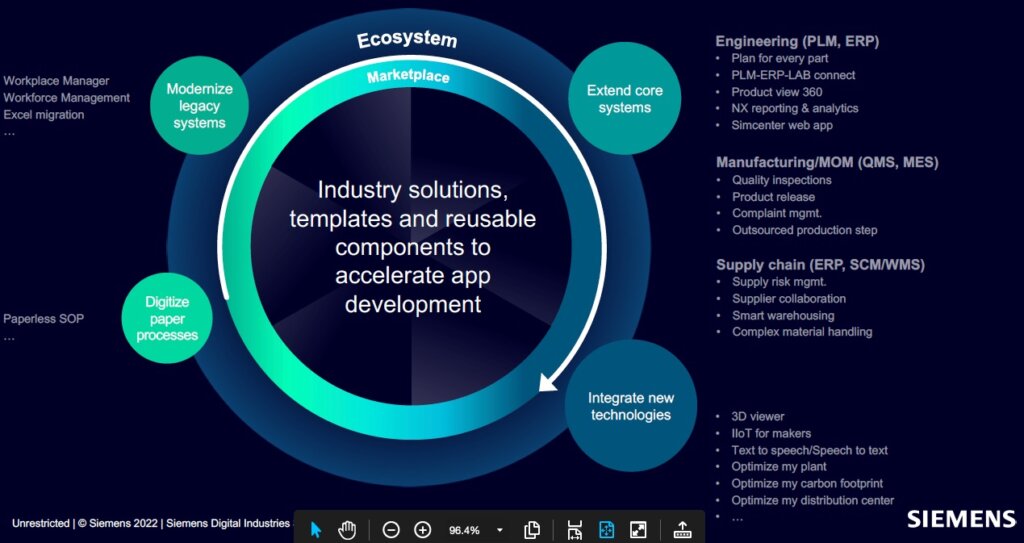 [post_title] => Siemens Shows Progress with Mendix Lowcode for Industrial Applications (insight)
[post_excerpt] =>
[post_status] => publish
[comment_status] => open
[ping_status] => open
[post_password] =>
[post_name] => siemens-mendix-insight
[to_ping] =>
[pinged] =>
[post_modified] => 2023-03-07 10:51:00
[post_modified_gmt] => 2023-03-07 15:51:00
[post_content_filtered] =>
[post_parent] => 0
[guid] => https://tech-clarity.com/?p=17857
[menu_order] => 0
[post_type] => post
[post_mime_type] =>
[comment_count] => 0
[filter] => raw
)
[2] => WP_Post Object
(
[ID] => 17806
[post_author] => 2
[post_date] => 2023-02-07 09:00:11
[post_date_gmt] => 2023-02-07 14:00:11
[post_content] =>
[post_title] => Siemens Shows Progress with Mendix Lowcode for Industrial Applications (insight)
[post_excerpt] =>
[post_status] => publish
[comment_status] => open
[ping_status] => open
[post_password] =>
[post_name] => siemens-mendix-insight
[to_ping] =>
[pinged] =>
[post_modified] => 2023-03-07 10:51:00
[post_modified_gmt] => 2023-03-07 15:51:00
[post_content_filtered] =>
[post_parent] => 0
[guid] => https://tech-clarity.com/?p=17857
[menu_order] => 0
[post_type] => post
[post_mime_type] =>
[comment_count] => 0
[filter] => raw
)
[2] => WP_Post Object
(
[ID] => 17806
[post_author] => 2
[post_date] => 2023-02-07 09:00:11
[post_date_gmt] => 2023-02-07 14:00:11
[post_content] => 
